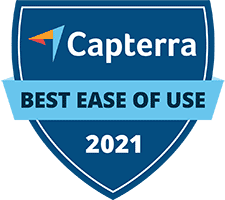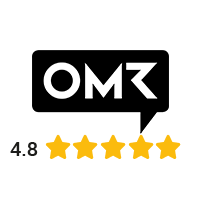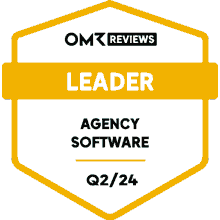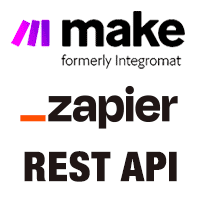Project Types
Time & Material (T&M) | Fixed Price / Lump Sum | Retainer (Monthly Flat Rate) | Hourly Contingent | Subscription (Hosting, Domain, etc.) | PitchTime & Material (T&M)
For projects on a time and material basis, all recorded services can usually be invoiced. Invoicing often occurs monthly.
Create Project
Select "Time & Material" in the project (1). Entering a budget is optional and usually makes sense for monitoring purposes – a target date is not necessary. » Option for monthly hour contingent
Non-billable Hours
Entire services (e.g., acquisition efforts) or individual hours can be set to "Non-billable" (e.g., certain corrections that are "on the house"). They do not count towards budget progress but do affect the project (profitability calculation/internal hourly rate).
Third-party Services on the Project
Third-party costs and other services that are independent of time tracking are recorded under Additional services.
Traditional Invoicing
Up to date, recorded billable services accumulate in the project list as billable amount (2) in the project list. A click leads directly to the invoicing option. Check "Billable Items" (3) and select "Create Invoice" (via the arrow alternative Detailed Invoice or Compact Invoice can be chosen).
An hourly report for the invoice is automatically generated and can be sent along with the email. To do this, select the checkbox in the shipping dialog or define it generally for the project in the invoicing information (4).
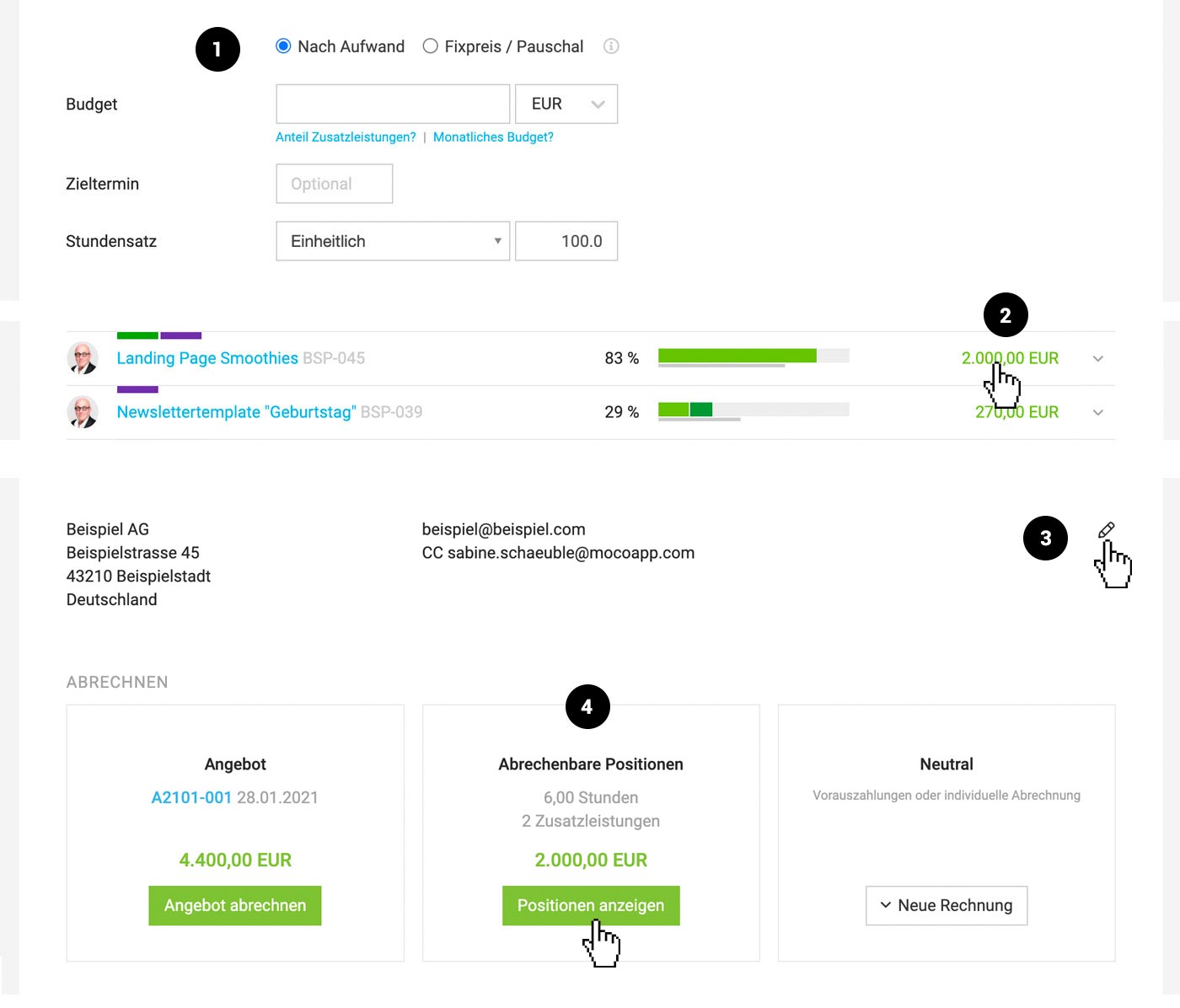 English image not yet available...
English image not yet available...Alternative Invoicing
MOCO generally keeps the type of invoicing open. For example, in a time and material project, the Proposal can also be invoiced – and if necessary, the number of hours on the invoice can be adjusted. Thus settled billable items can be set to "Already Invoiced". MOCO takes this step when archiving.
Invoice multiple projects collectively on a monthly basis
A) Collective Invoice Customer
B) Invoice several projects individually with one click
A) Collective Invoice Customer
B) Invoice several projects individually with one click
Fixed Price / Lump Sum
A fixed price project is usually invoiced completely at the end for the proposed fixed price – or interim invoices and a final invoice are issued. Invoicing notice and revenue forecast for a fixed price project are controlled via the invoicing plan.
Create Project
Select "Fixed Price / Lump Sum" (1) in the project form.
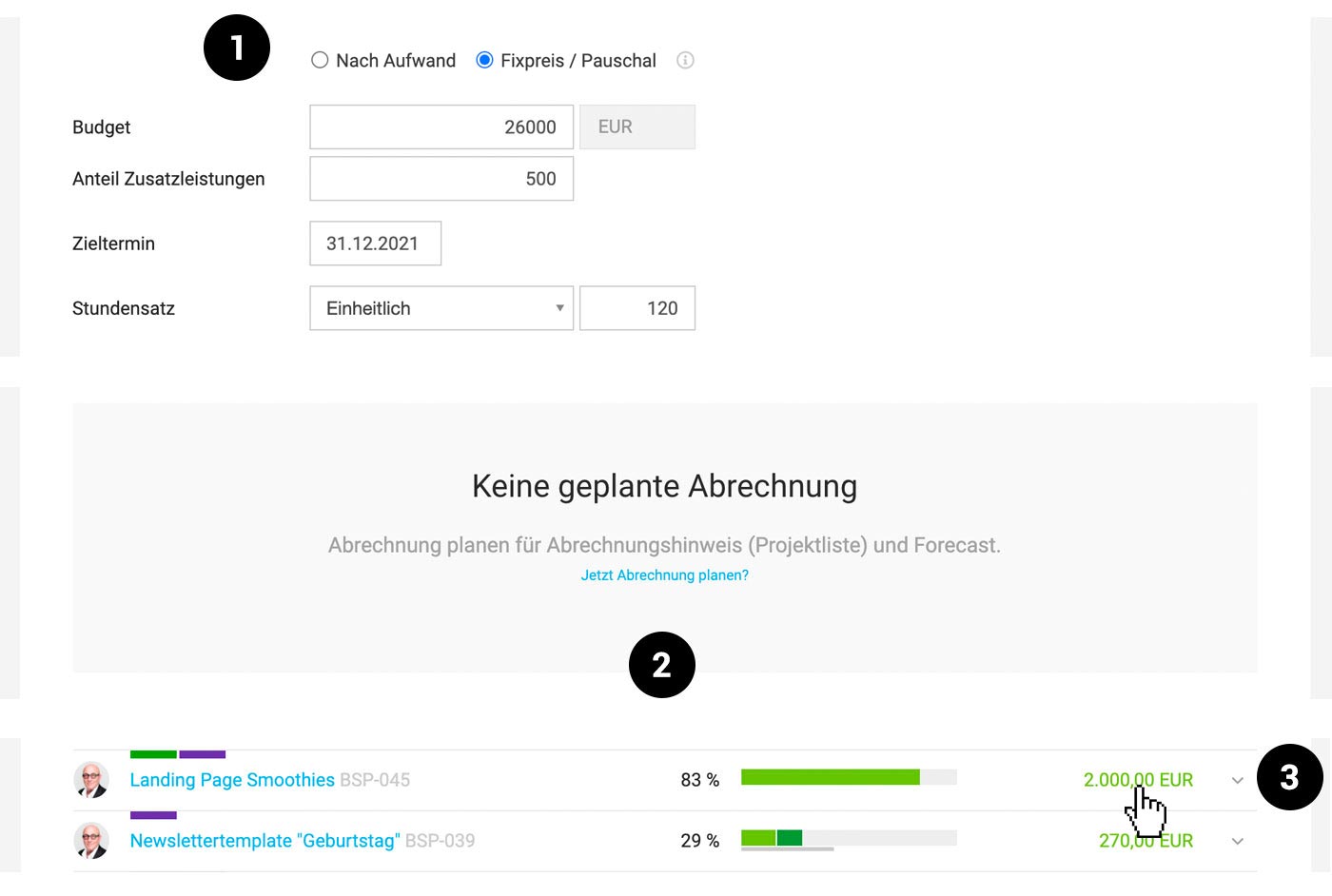 English image not yet available...
English image not yet available...Invoicing
Invoicing notice and revenue forecast for a fixed price project are controlled via the invoicing plan (2). This invoicing plan is filled in the project under "Invoicing". MOCO shows the amount as billable on the due date in the project list (3). A click on it leads directly to the invoicing option. MOCO also offers a notification on the due date.
Control
Recorded (billable) hours are considered inclusive and run against the budget for budget control.
Additional services (external costs such as printing costs, image material, personal expenses, etc.)
Recorded (billable) hours are considered inclusive and run against the budget for budget control.
Additional services (external costs such as printing costs, image material, personal expenses, etc.)
- If these are covered by the fixed price (= project budget), select "Within Budget".
- If services are to be offered for invoicing, select "Billable". When invoicing, these billable items can also be added to the invoice.
Retainer (Monthly Flat Rate)
What is typically understood by a retainer:
Retainer describes a regular MONTHLY FLAT RATE that the agency invoices to the client. This covers agreed regular services. External services – i.e., services purchased from suppliers such as travel expenses, translations, etc. – can also be part of a retainer flat rate. The aim here is to ensure that the budget can be controlled monthly and overall, with the goal of ensuring a certain margin.
Video about the retainer
Retainer describes a regular MONTHLY FLAT RATE that the agency invoices to the client. This covers agreed regular services. External services – i.e., services purchased from suppliers such as travel expenses, translations, etc. – can also be part of a retainer flat rate. The aim here is to ensure that the budget can be controlled monthly and overall, with the goal of ensuring a certain margin.
Video about the retainer
The retainer in MOCO corresponds to the combination of settings: Fixed Price Invoicing + Monthly Budget.
The typical identifying feature in MOCO is the arrow shape of the budget bar, which indicates the monthly increasing budget. In the project list, the filter can be called up with "F" and filtered by "Fixed Price with Monthly Budget".
 English image not yet available...
English image not yet available...The automatically increasing budget
MOCO considers the budget until the end of the current month. Always starting at 0 on the 1st of each month is not optimal for control because it ignores the overall economic picture. There are usually the following two situations:
A) You have been slightly over the budget for the past few months, then you should rather see that you have less and less available overall. If the budget is already completely overbooked, you can counteract this in time.
B) You have always managed to stay under the monthly budget for the past few months, then you see the total remaining including the "savings" of the past months.
Advantages
Advantages
- Control of the current status directly in the project list
- Control of the current month via notification & project report
- Display of remaining hours in time tracking selectable (budget or only monthly budget)
- Total hours of the duration can be planned in capacity planning
- Labeling & filter option for retainers in the project list
Create Retainer
1. When creating a new project, select "Fixed Price / Flat Rate" and "Monthly Budget?".
2. Enter the starting budget (usually 0.–), monthly amount, and duration. If the retainer starts in the current month, enter the monthly amount as the starting budget. MOCO displays the calculated amounts in a blue box for control.
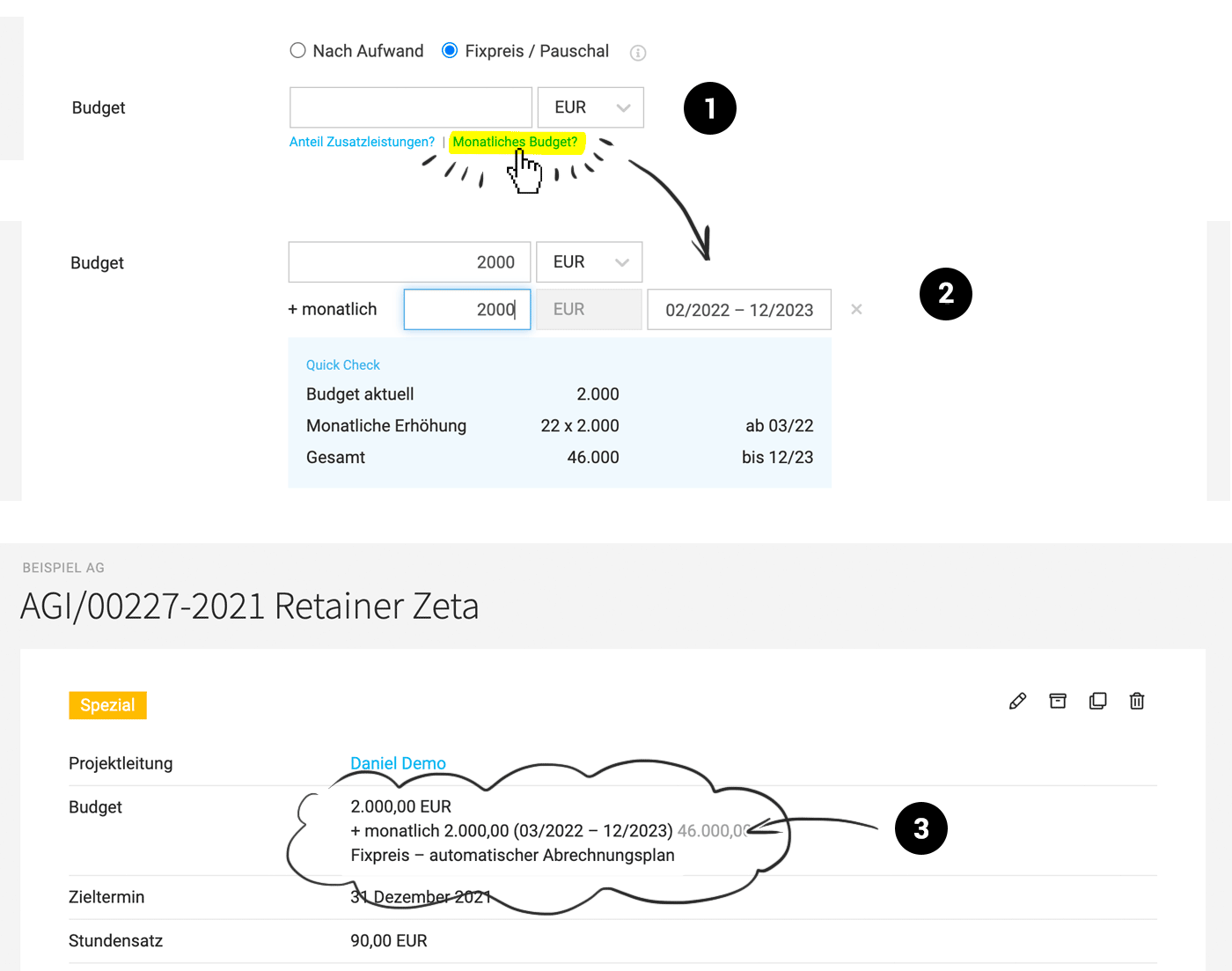 English image not yet available...
English image not yet available...
In the project details, the information about the retainer is displayed (3).
2. Enter the starting budget (usually 0.–), monthly amount, and duration. If the retainer starts in the current month, enter the monthly amount as the starting budget. MOCO displays the calculated amounts in a blue box for control.
 English image not yet available...
English image not yet available...In the project details, the information about the retainer is displayed (3).
Planning
The stored, calculated budget (see 3 – gray number) is available in the form of plannable hours in capacity planning.
Planned vs. actual hours can be compared in the project report.
Planned vs. actual hours can be compared in the project report.
Control
(1) Control of the current status in the project list. A click on this budget progress bar leads to the project report.
(2) Under "Hours," it shows how many hours you are over or under budget at the current time. Above the monthly graph (mouseover for hours + amount), there is a marker. Further down, the months are broken down in more detail with remaining amount and remaining hours. Planned hours are also visible and comparable.
(3) The budget progress bar shows the cumulative budget including the current month, performed, and remaining.
(4) Breakdown of the months
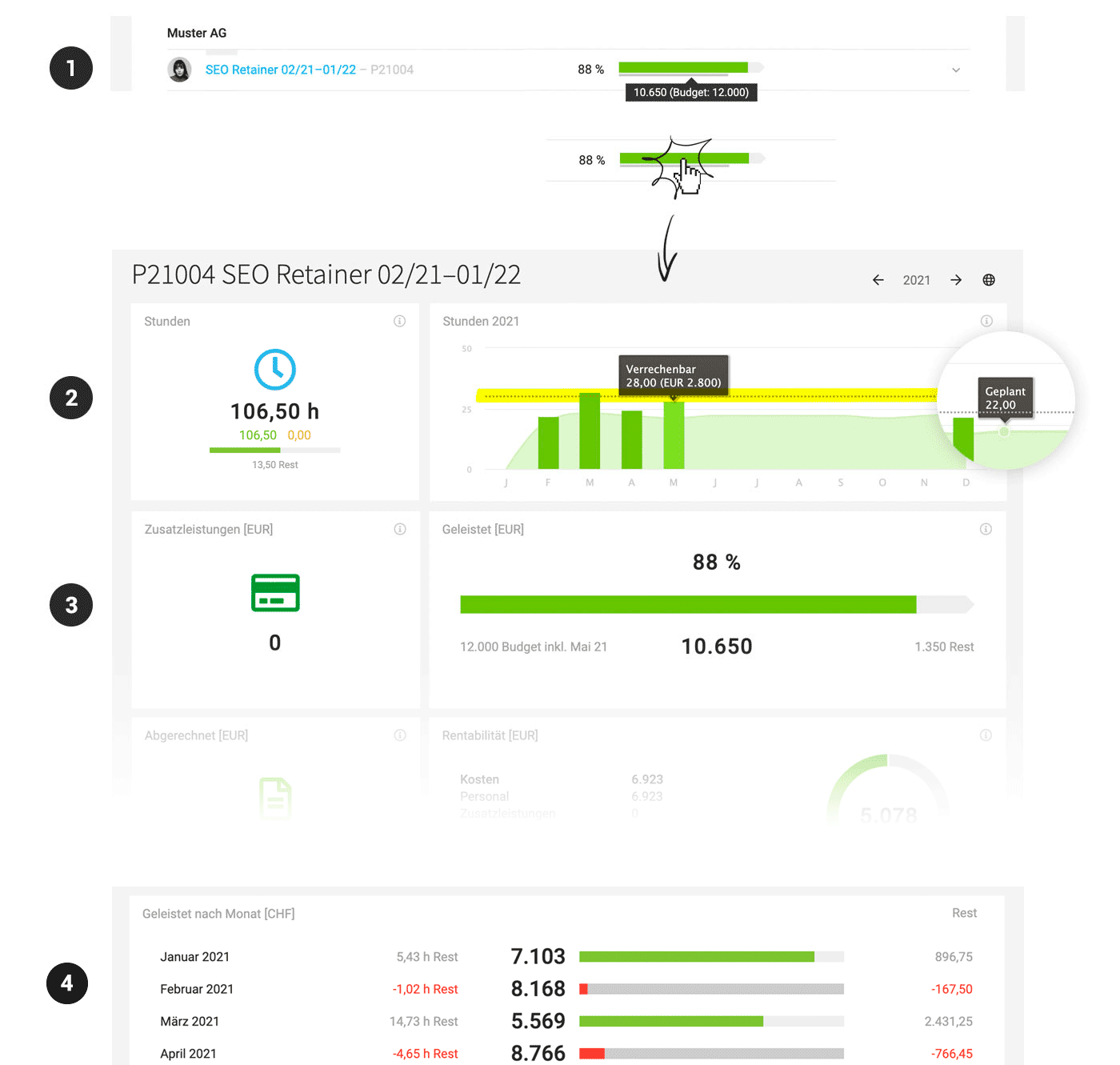 English image not yet available...
English image not yet available...
(2) Under "Hours," it shows how many hours you are over or under budget at the current time. Above the monthly graph (mouseover for hours + amount), there is a marker. Further down, the months are broken down in more detail with remaining amount and remaining hours. Planned hours are also visible and comparable.
(3) The budget progress bar shows the cumulative budget including the current month, performed, and remaining.
(4) Breakdown of the months
 English image not yet available...
English image not yet available...Invoicing
1. At the invoicing date, MOCO offers the monthly amount in the project list for invoicing.
2. A click on it leads to the invoicing page with the invoicing plan.
3. Create the invoice via "Billable Items" (or via mass invoicing)
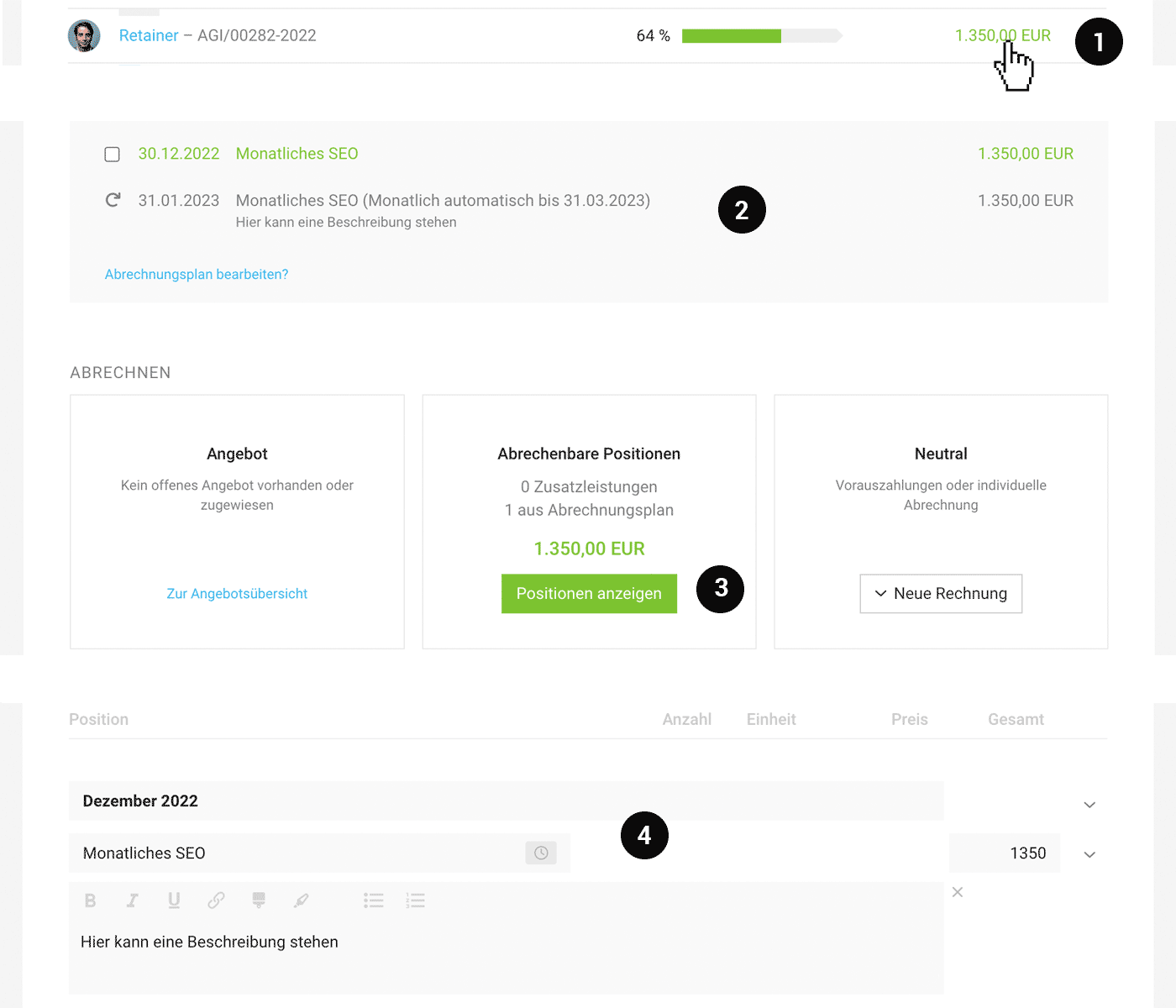 English image not yet available...
English image not yet available...
MOCO creates an automatic invoicing plan (2) from the next full month of the selected duration (if an invoice is still needed for the current month, create it manually or add it as an item). The invoicing date and item description can be adjusted – and a description added.
On the 1st of each month, the invoicing item is created and can generally also be selected and invoiced manually before the invoicing date under "Billable Items".
2. A click on it leads to the invoicing page with the invoicing plan.
3. Create the invoice via "Billable Items" (or via mass invoicing)
 English image not yet available...
English image not yet available...MOCO creates an automatic invoicing plan (2) from the next full month of the selected duration (if an invoice is still needed for the current month, create it manually or add it as an item). The invoicing date and item description can be adjusted – and a description added.
On the 1st of each month, the invoicing item is created and can generally also be selected and invoiced manually before the invoicing date under "Billable Items".
Forecast (planned billable)
The automatic invoicing plan also flows into the revenue forecast (Invoicing > Report and Reports > Finances)
Additional Effort
For additional effort, an additional service "Additional Effort" can be created and invoiced or subsequently added to an invoice here.
Hourly Contingent
Hourly contingent refers to a project with a monthly budget (cost ceiling) that is invoiced based on effort. For example, a maintenance project like software maintenance or a maintenance contract. A certain number of hours (or an amount) is agreed upon with the client, which can be performed without requiring budget approval each time.
To set up and control the monthly contingent, select "Monthly Budget?" (1) in the project form below the budget field – enter the amount and duration.
This is how the monthly budget affects
The monthly budget is automatically added each month, so the total budget up to today remains controllable – but also the monthly budget.
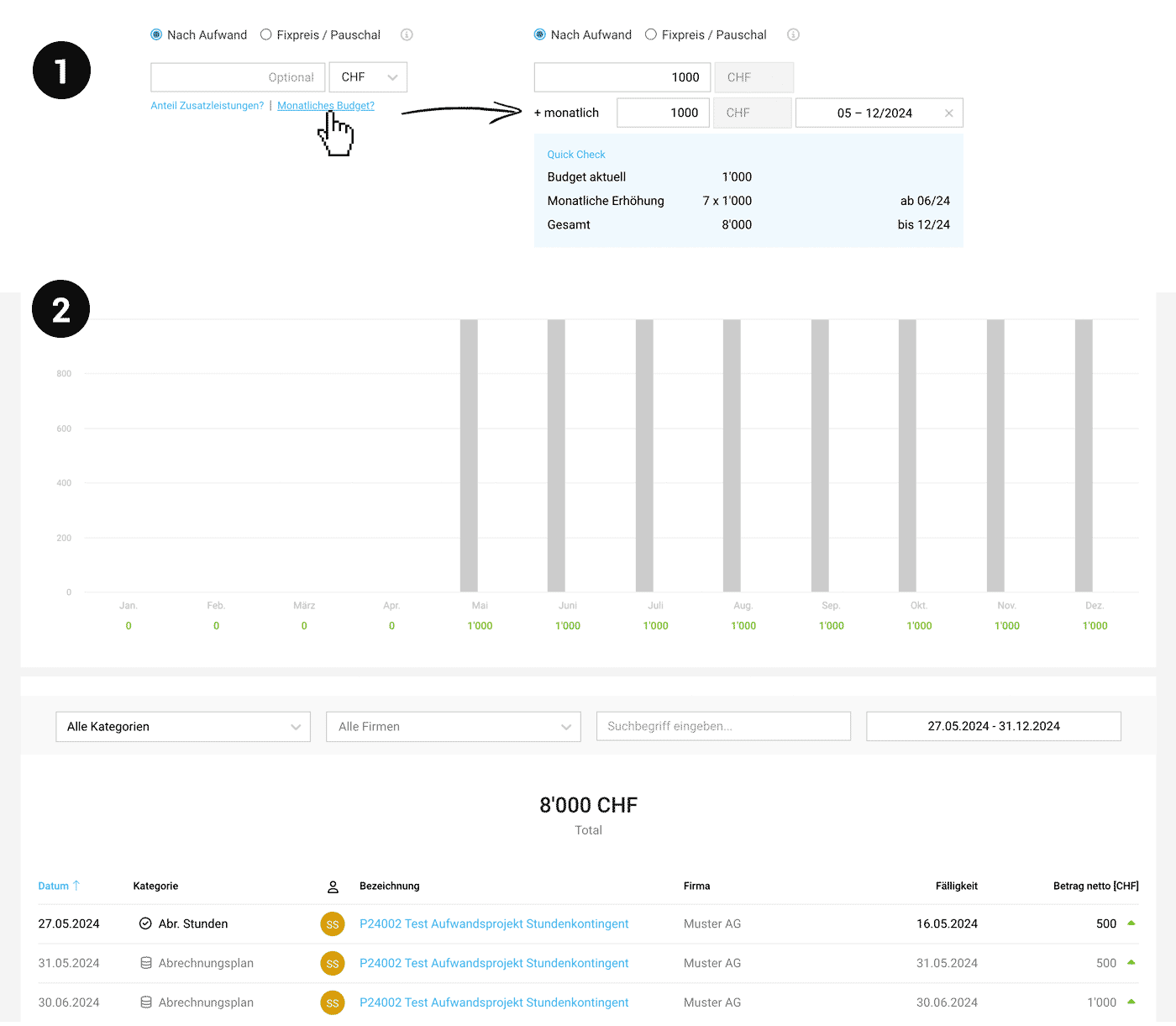 English image not yet available...
English image not yet available...
 English image not yet available...
English image not yet available...Advantages at a Glance
- Consideration in the financial report (2) as planned invoicing until the end of the term
- Control of the current month via notification & project report
- Control of performed vs. current total budget in the project list and project report
- Display of remaining hours for time tracking: You can only display the monthly hours (Settings > Time Tracking)
- Capacity planning: Total hours of the term can be planned
- Labeling & filter option in the project list
Subscription (Hosting, Domain, etc.)
For recurring charges with their own duration, such as hosting or domains, you can also use a project – and automatically generate the amounts for invoicing.
Create a Project
1. Create a project with the setting "Based on effort" and without a budget. If the subscription end date is already known, set the target date. Delete the standard services automatically filled in after saving to ensure they are not offered for time tracking.
2. Create a recurring additional service. The billable item will be created on the due date each time, and no end date needs to be specified yet. Ideally, subscriptions should be invoiced on the same due dates (e.g., always in advance on the 1st, at the beginning of the year, at the start of the quarter, etc.).
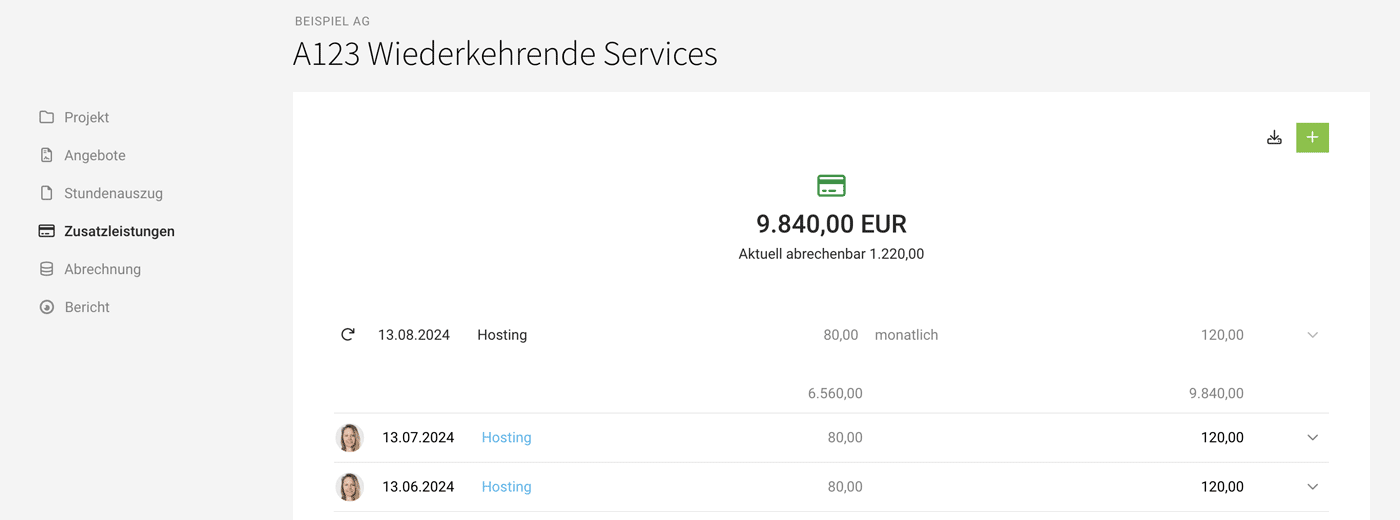 English image not yet available...
English image not yet available...
Filter/Invoicing
Mark "subscription projects" with a label (e.g., "Subscription") for optimal filtering and collective invoicing with a single click.
All information on targeted mass invoicing
Forecast
These recurring additional services will also be displayed as planned revenues.
2. Create a recurring additional service. The billable item will be created on the due date each time, and no end date needs to be specified yet. Ideally, subscriptions should be invoiced on the same due dates (e.g., always in advance on the 1st, at the beginning of the year, at the start of the quarter, etc.).
 English image not yet available...
English image not yet available...Filter/Invoicing
Mark "subscription projects" with a label (e.g., "Subscription") for optimal filtering and collective invoicing with a single click.
All information on targeted mass invoicing
Forecast
These recurring additional services will also be displayed as planned revenues.
Pitch
Especially during a pitch or tender, significant workloads may arise that you might want to invoice later or that should impact the project's profitability analysis.
During the uncertain acquisition phase, you typically don't create a project in MOCO but rather a lead. Leads are project opportunities that you follow until completion and are much leaner than projects: A lead can already be planned in capacity planning – but times cannot be directly recorded on a lead.
We recommend the following options for time tracking:
a) Create a project
In the lead, create a project via "+ New Project" at the top right. To distinguish it from ongoing projects, label the project as a pitch or prepend "[PITCH]..." to its name. Now, either book the usual services or initially just one service, which you can call "Acquisition."
If you set the hourly rate to "0" during the pitch phase, the project remains "neutral" – the hourly rate can be adjusted once the pitch is won. If you lose the pitch, archive the project.
b) Book, evaluate, or later reassign general acquisition efforts to projects
During the uncertain acquisition phase, you typically don't create a project in MOCO but rather a lead. Leads are project opportunities that you follow until completion and are much leaner than projects: A lead can already be planned in capacity planning – but times cannot be directly recorded on a lead.
We recommend the following options for time tracking:
a) Create a project
In the lead, create a project via "+ New Project" at the top right. To distinguish it from ongoing projects, label the project as a pitch or prepend "[PITCH]..." to its name. Now, either book the usual services or initially just one service, which you can call "Acquisition."
If you set the hourly rate to "0" during the pitch phase, the project remains "neutral" – the hourly rate can be adjusted once the pitch is won. If you lose the pitch, archive the project.
b) Book, evaluate, or later reassign general acquisition efforts to projects
